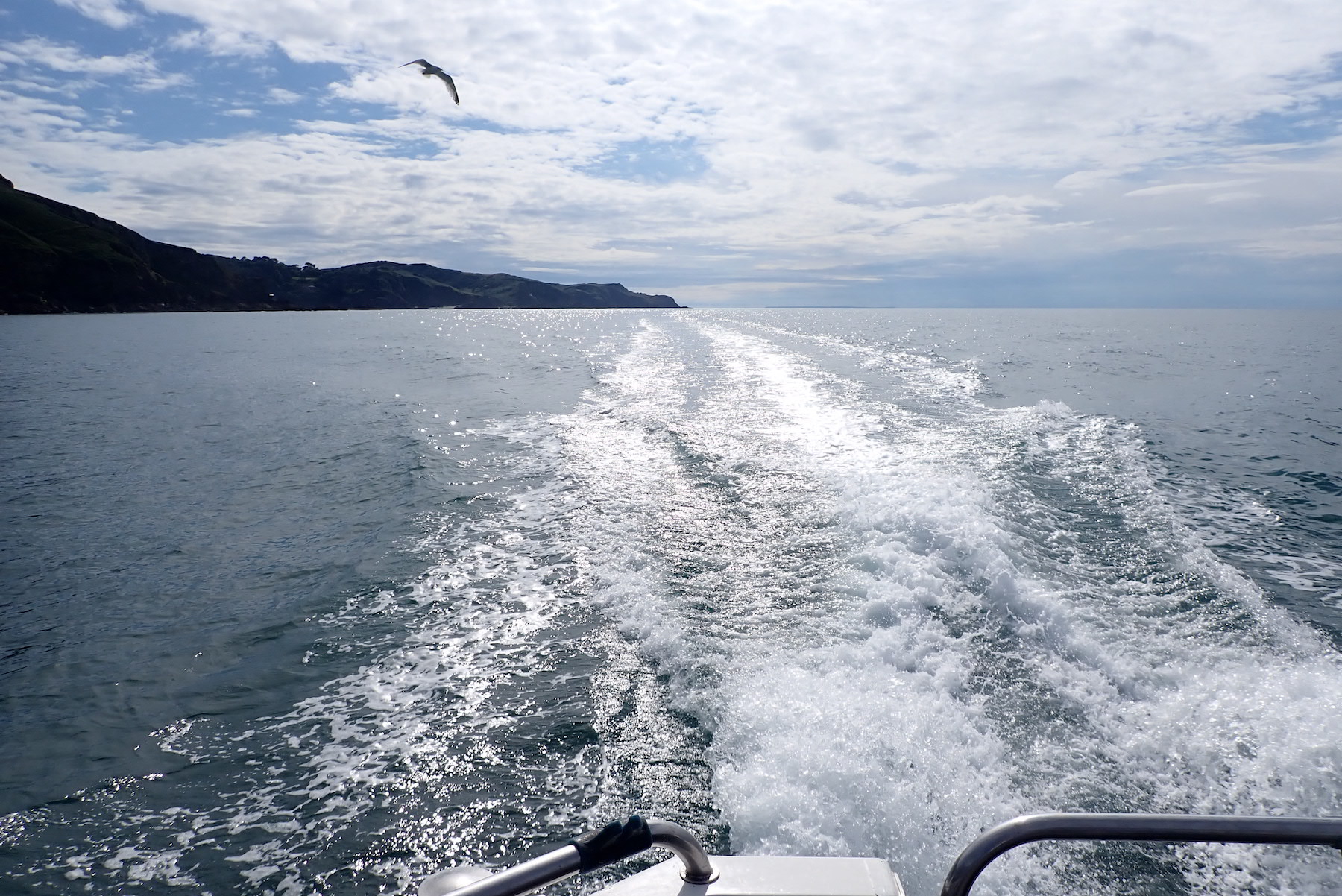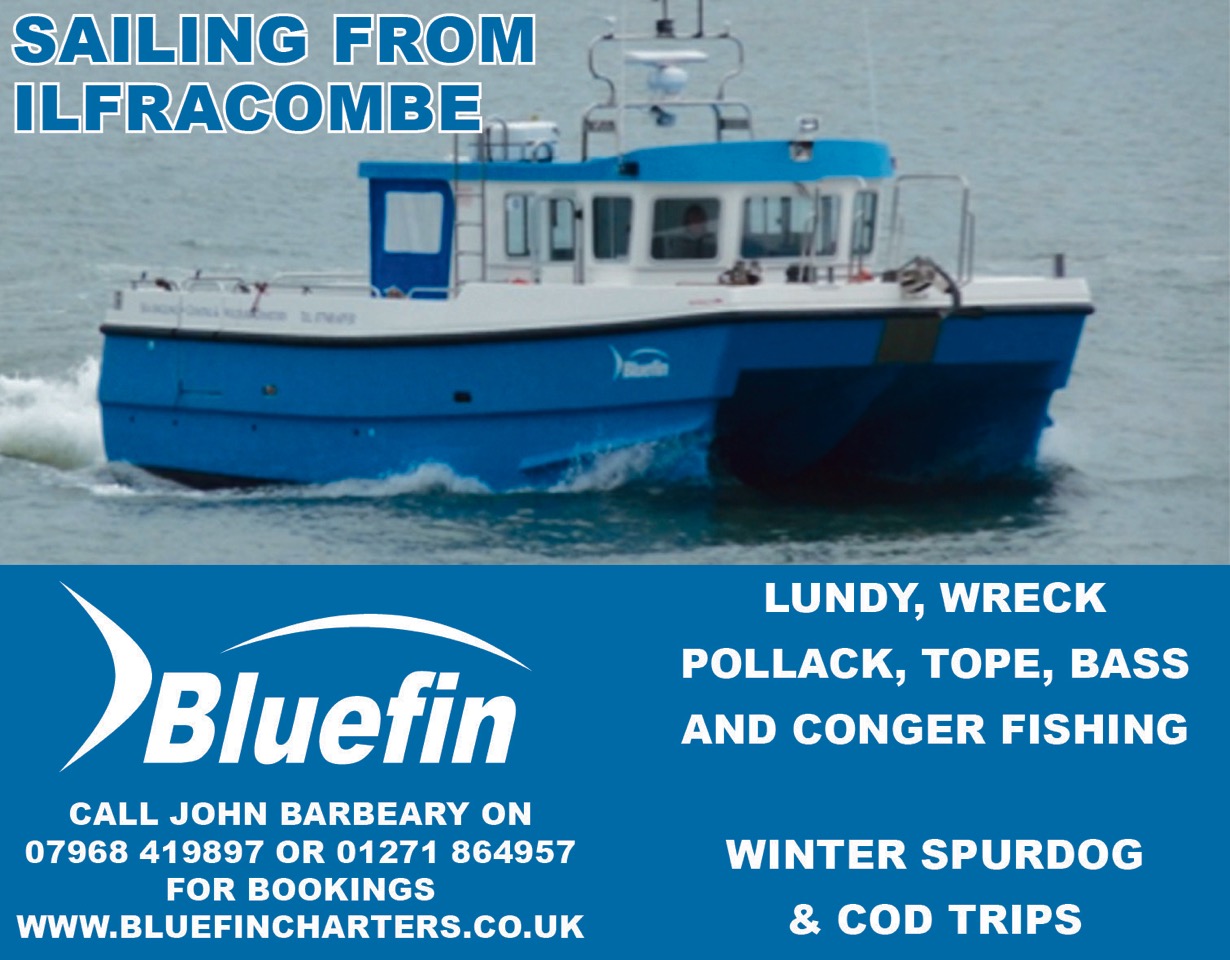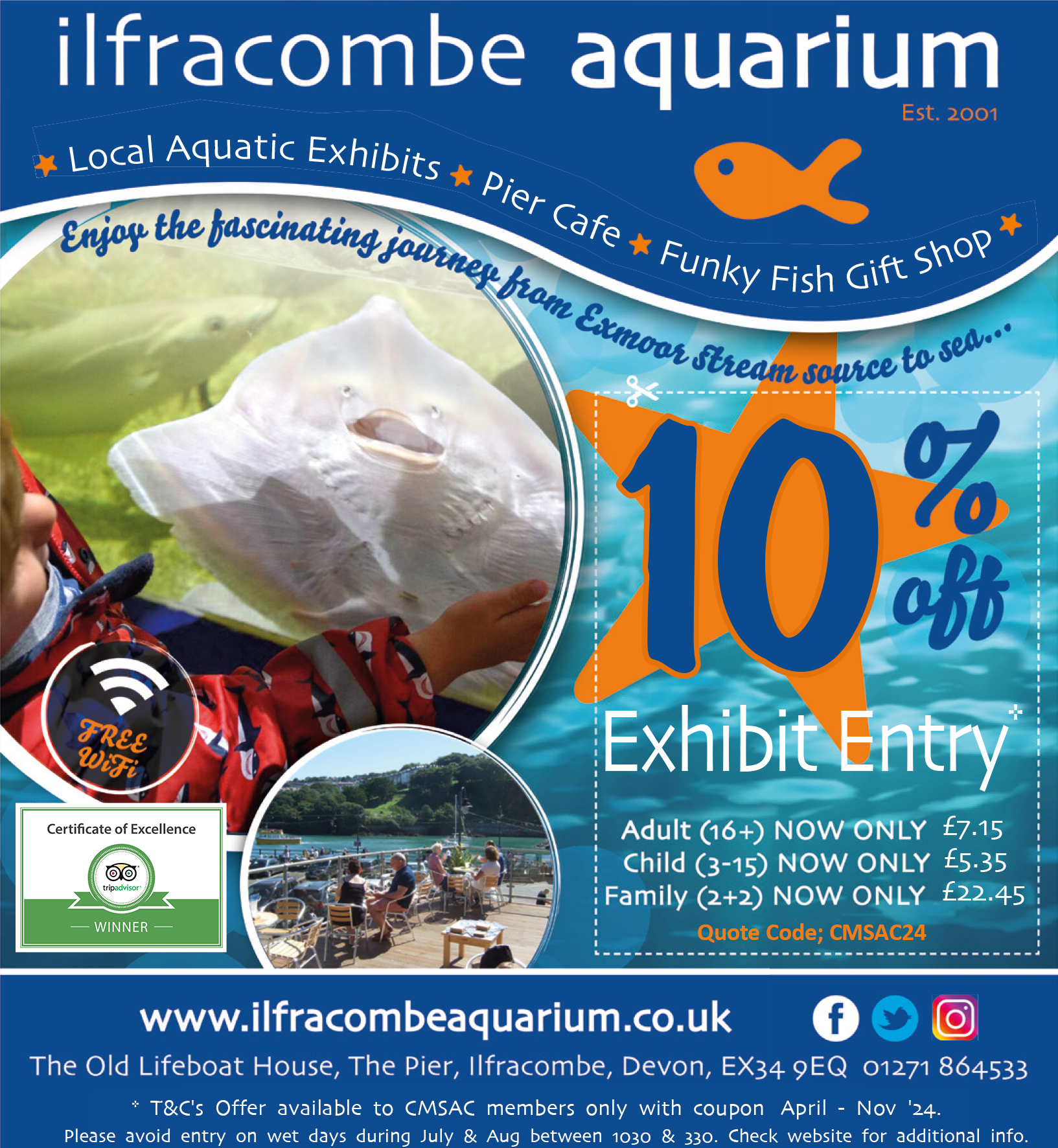Ilfracombe harbour once again ready to depart for a day aboard John Barbeary’s boat ‘Blue Fin’ with members of South Molton and District Angling Club. It doesn’t really feel like a July morning with a cool North East breeze blowing into the harbour. The predominantly grey sky seemingly typical of the summer of 2024 so far.
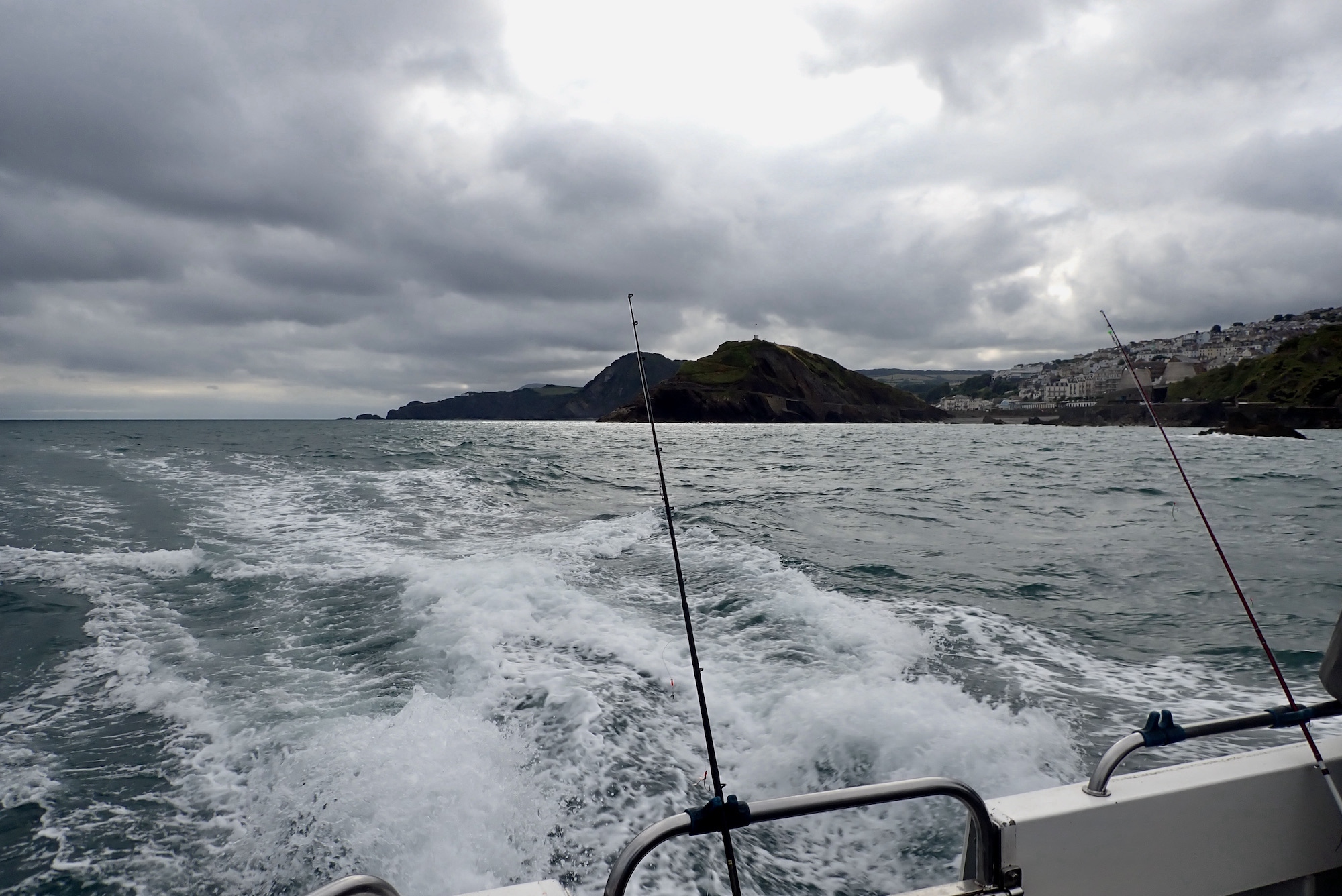
The sea is not too rough however and the forecast gives the wind easing throughout the day and with good fishing enjoyed on another Ilfracombe Boat last week I am optimistic for the day ahead. We all climb from the harbour steps and greet John and his deckhand Ted. Club members today include Edward Rands, Dave Hathaway, Nick Stringer, Chris Allin, Steve Edmonds and myself.
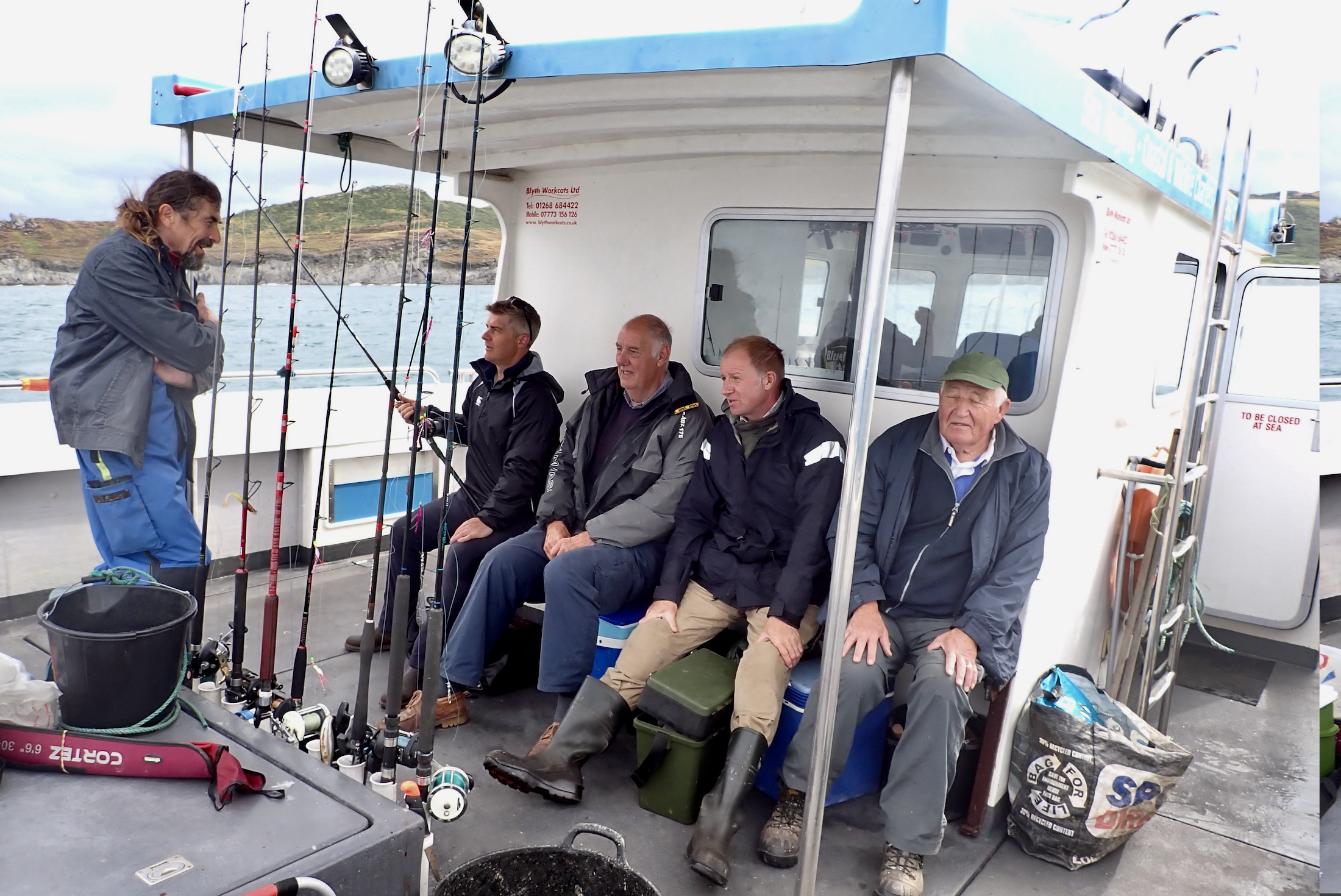
South Molton Angling Club has been established for over fifty years and has several miles of trout fishing on local rivers. Its membership of around fifty are mostly game fishers with a segment of occasional sea anglers. The club has a healthy social side with trips most months of the year with trophies awarded to recognized members achievements. All in all a friendly easy going club without a serious competitive streak.
The prospect of a slightly turbulent sea raised a few concerns about the sea anglers curse of mal-de-mer that were to prove found less. All concerned members had taken Stugeron tablets as a precaution. Discussion around previous unpleasant trips were recounted with lessons such as abstaining from alcohol the previous night recalled from observations of past excursions.
The plan for the day was to stop off on route to catch bait and then drift a few reefs for bass or pollock before dropping anchor in the hope of tope.
The feathers went down a short distance from port and strings of writhing mackerel were swung on board. Ted the friendly crewman for the day worked hard assisting with unhooking. It was interesting to listen to Ted’s wisdom as he commented upon the effectiveness of different coloured mackerel feathers. A few days previous he had noted how white feathers had proved effective during one tide with blue and silver more effective on another. The mackerel preferences are undoubtedly influenced by many factors including what they are feeding on naturally perhaps combined with light levels, water clarity and tidal state.
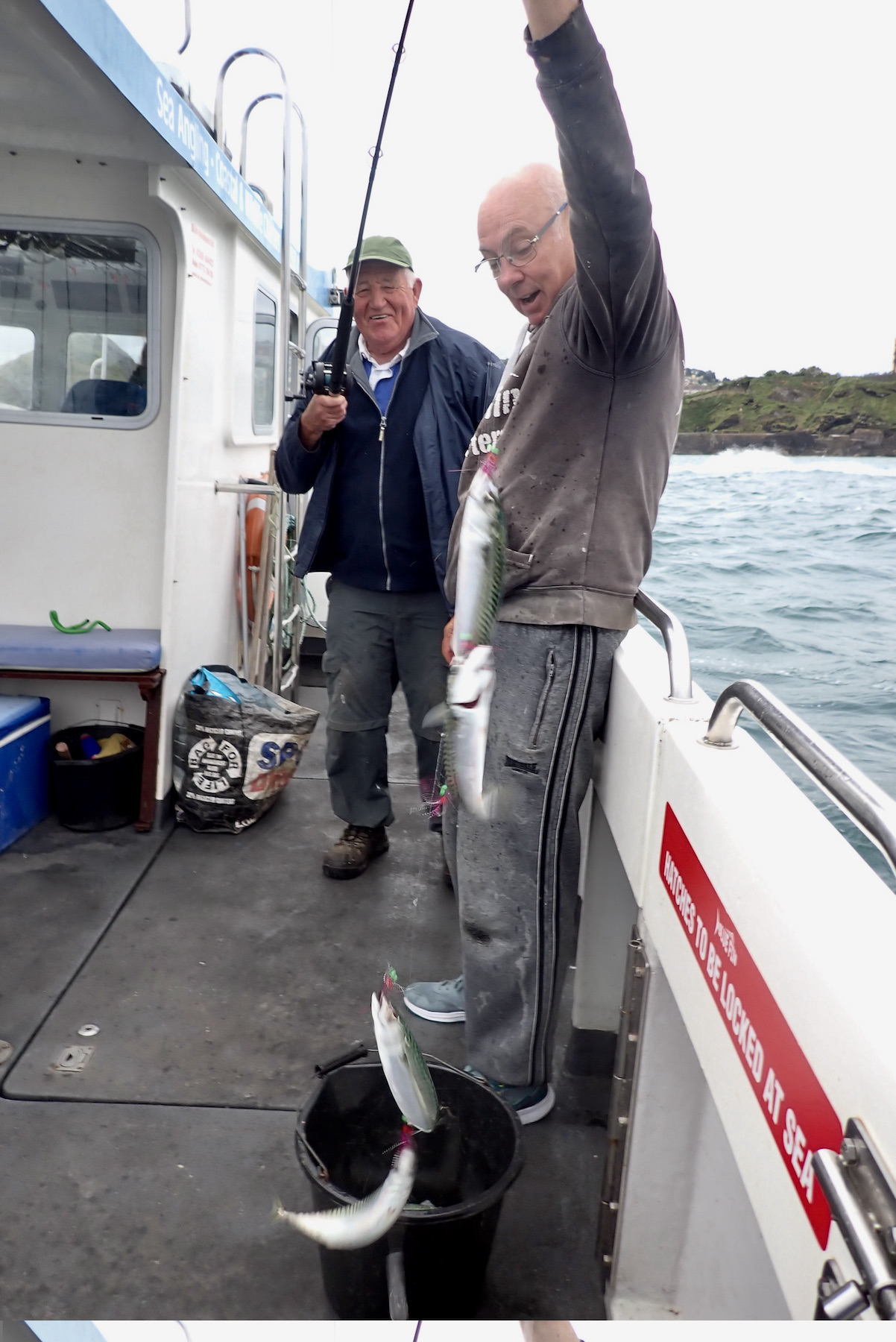
It seemed that all our strings of lures were working as be drifted off Ilfracombe’s rocky foreshore. Strings of mackerel were swung on board. John commented that it was like the old days when mackerel were always abundant throughout the summer months. Mackerel numbers seem to vary each year and after several years of poor numbers the last two seasons have been encouraging. It has also been noticeable that mackerel have been present throughout the winter months along with garfish.
Having caught plenty of mackerel we steamed on down channel passing the cragged slate promontory of Morte Point and the treacherous Morte Stone. The promontory of Morte Point pushes out into the Bristol Channel the rock formation running down its spine resembling that of a huge dragon immortalised in grey stone. The resulting tidal race over the Morte reef is a renowned holding place for bass with huge shoals sometimes present harassing mackerel and whitebait as gannets plunge into the resulting melee.
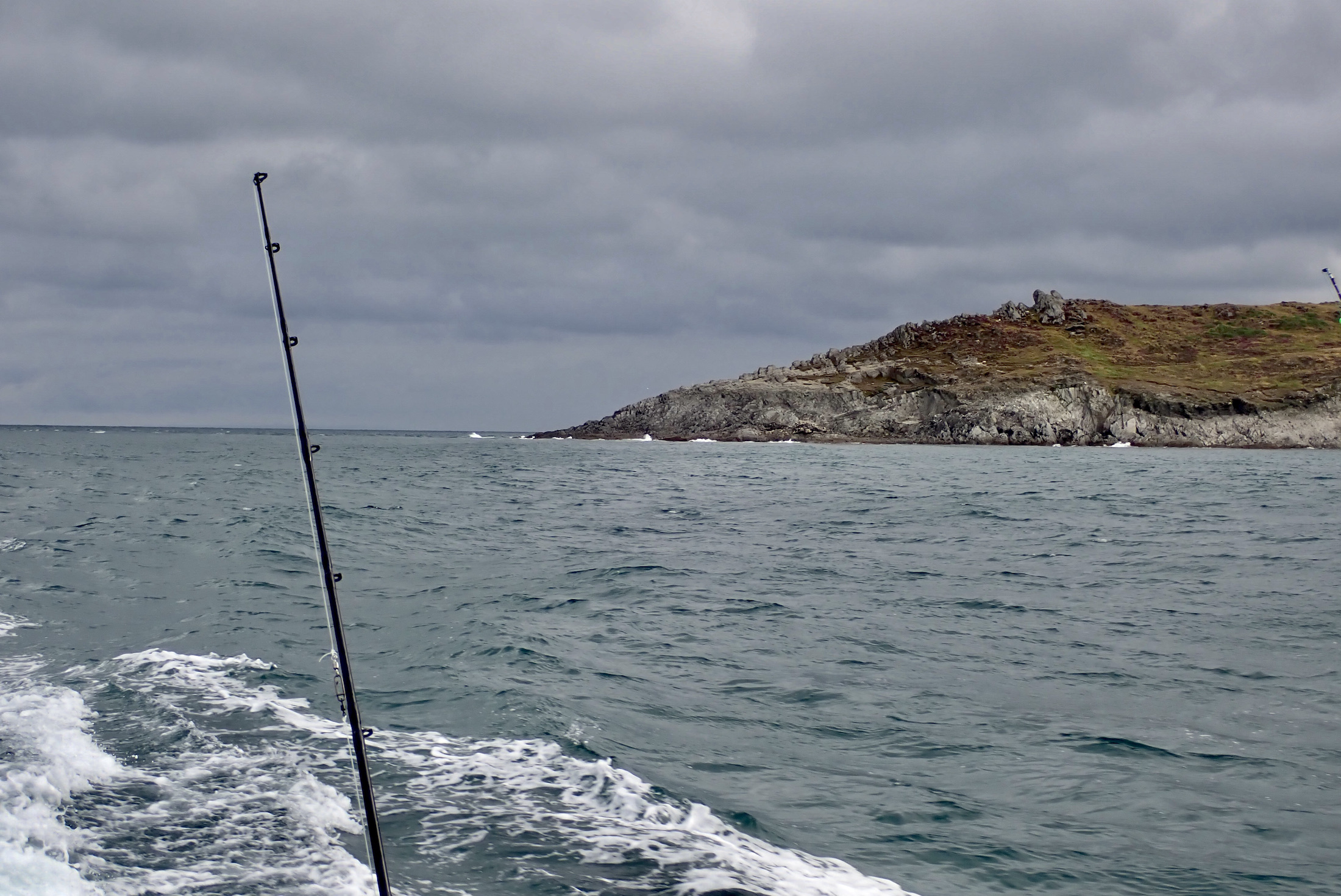
We pushed on down across Woolacombe Bay and its sands of gold to Baggy Point its steep cliffs the haunts of climbers and seabirds. We drifted over a couple of reefs catching a handful of pollock and a few more mackerel. It was perhaps surprising that we did not catch more fish such as bass as the huge number of birds present was a sure indication of bait fish and predators. Fish were undoubtedly present with plenty showing on the boats sounder.
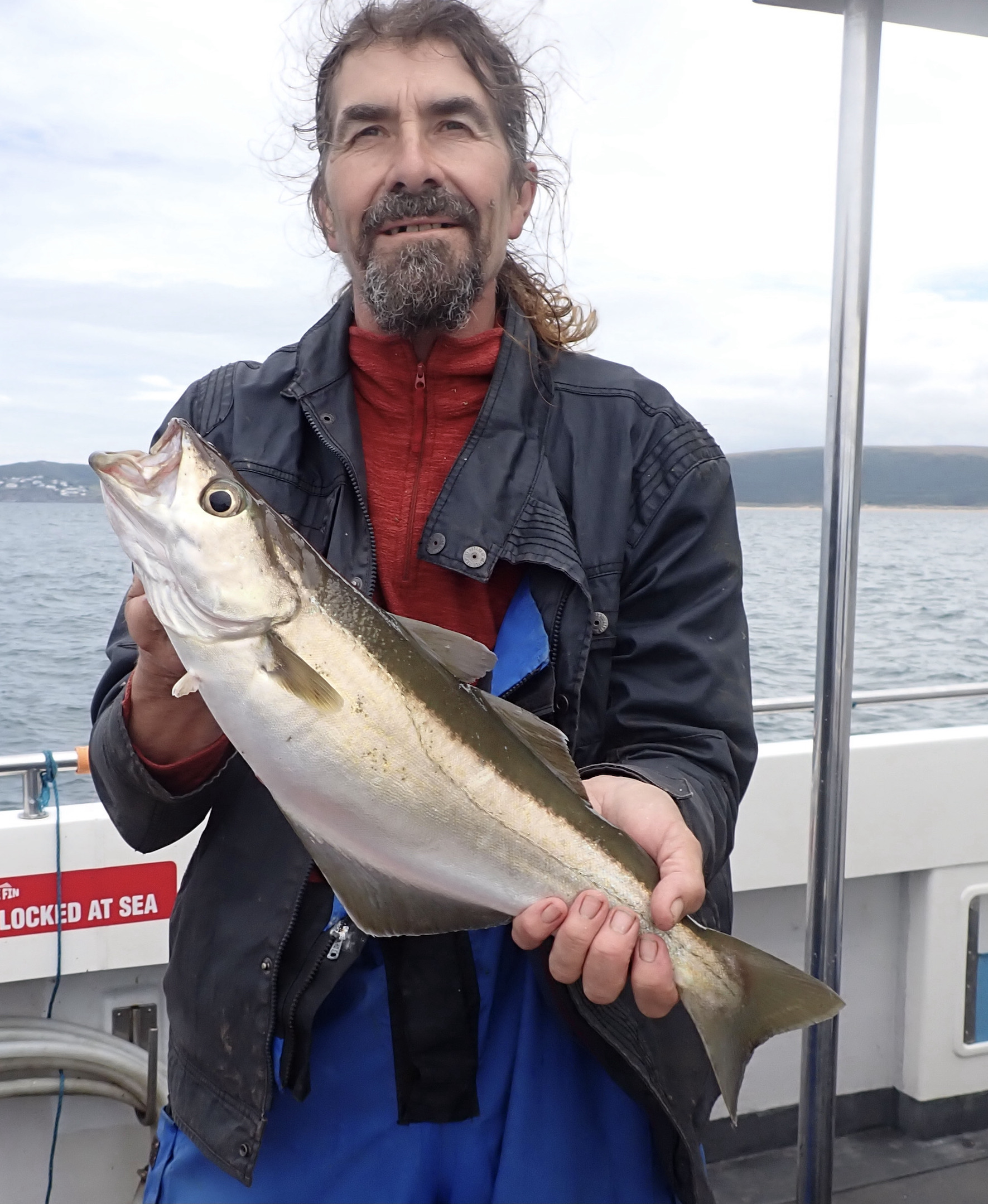
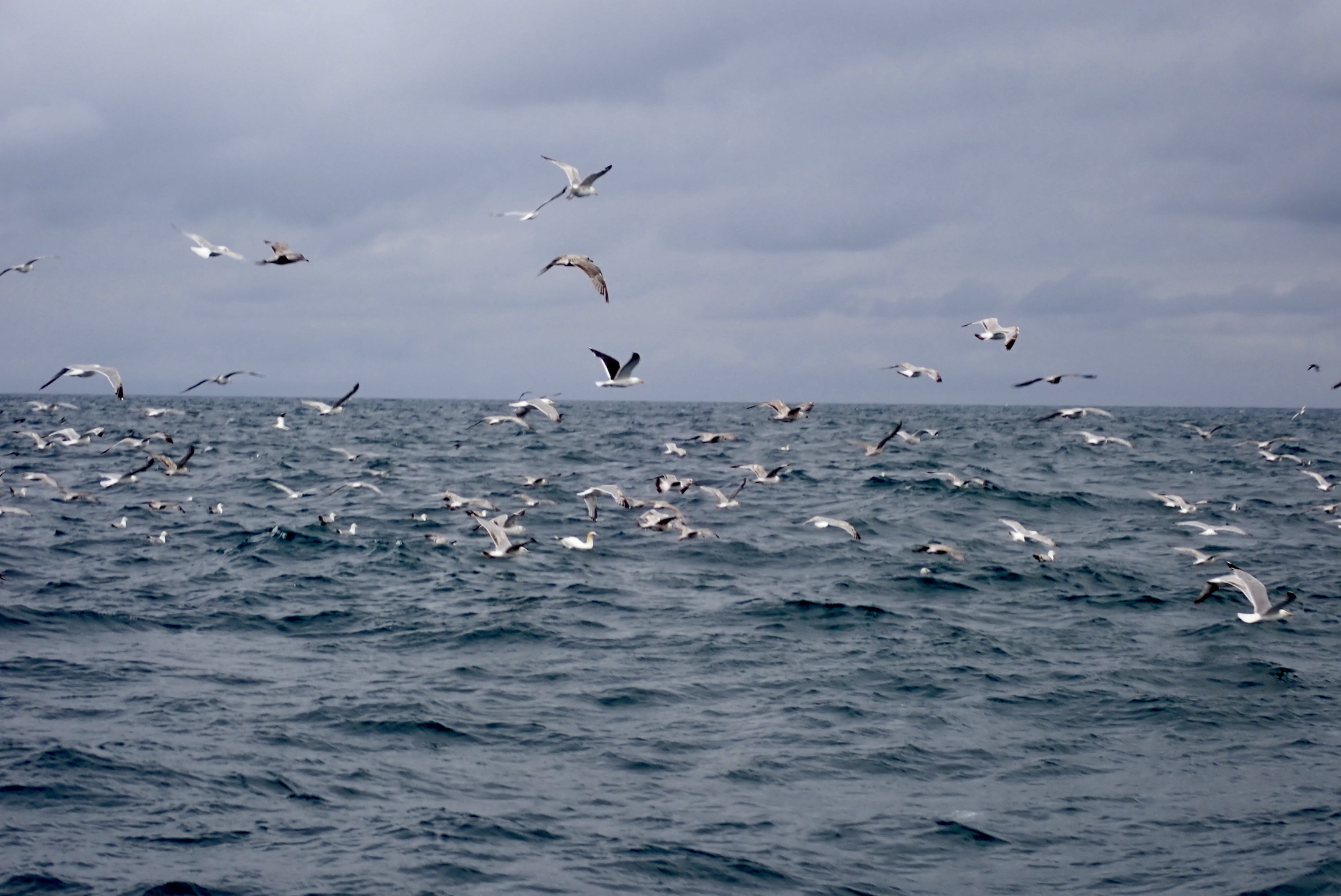
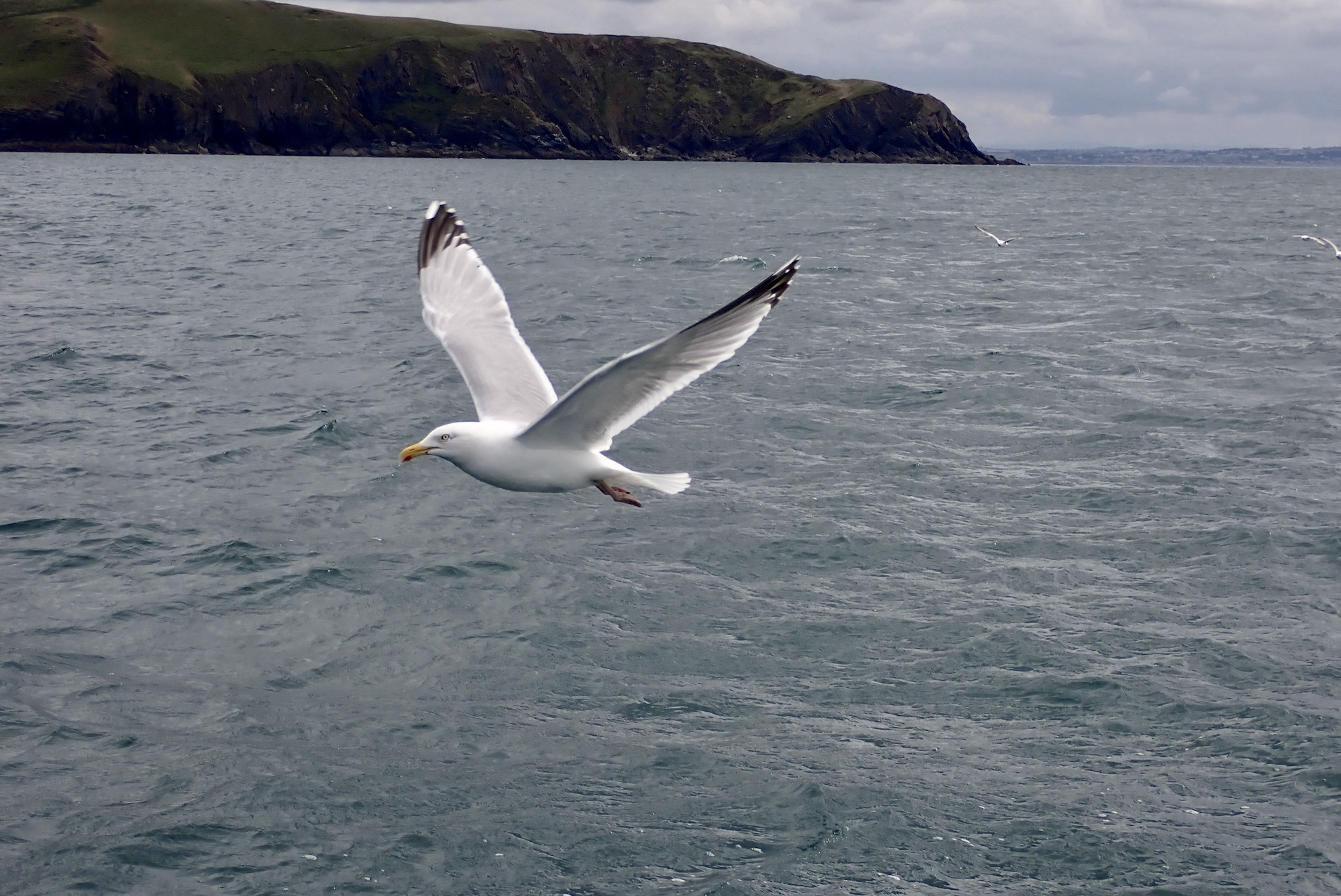
This whole job of being a skipper can be very frustrating. Finding the fish is just one part of an incredibly complex puzzle. The experienced skipper will have developed a unique gift of being able to inspire anglers with tales of past successes and explaining the lack of success with a recipe book full of valid excuses. As the tide eased John put us on a mark slightly West of Baggy and dropped the anchor.
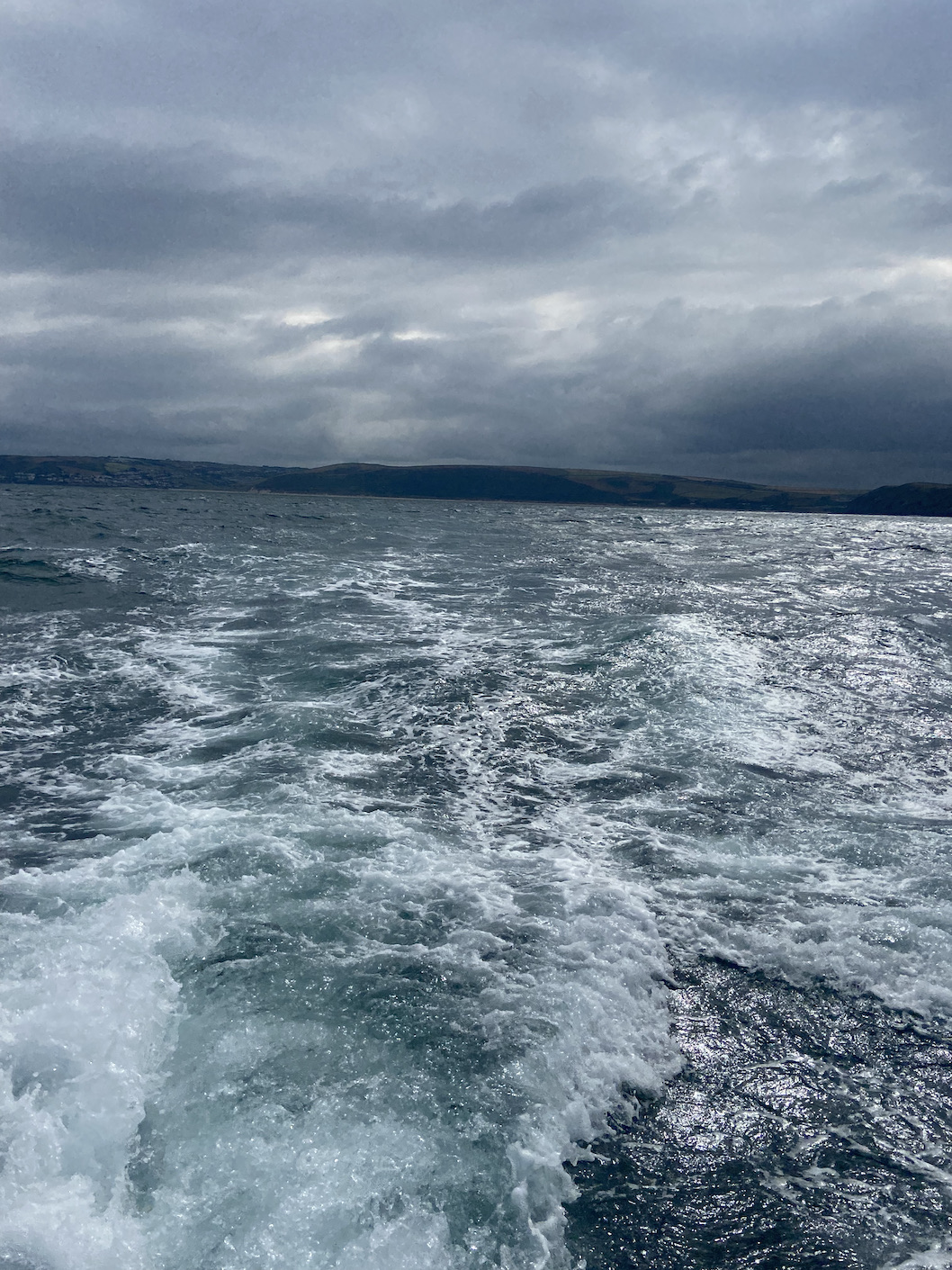
The rod tips soon rattled to the pull of dogfish. Ed Rands hooked several bull huss and a few small conger put a bend in members rods.
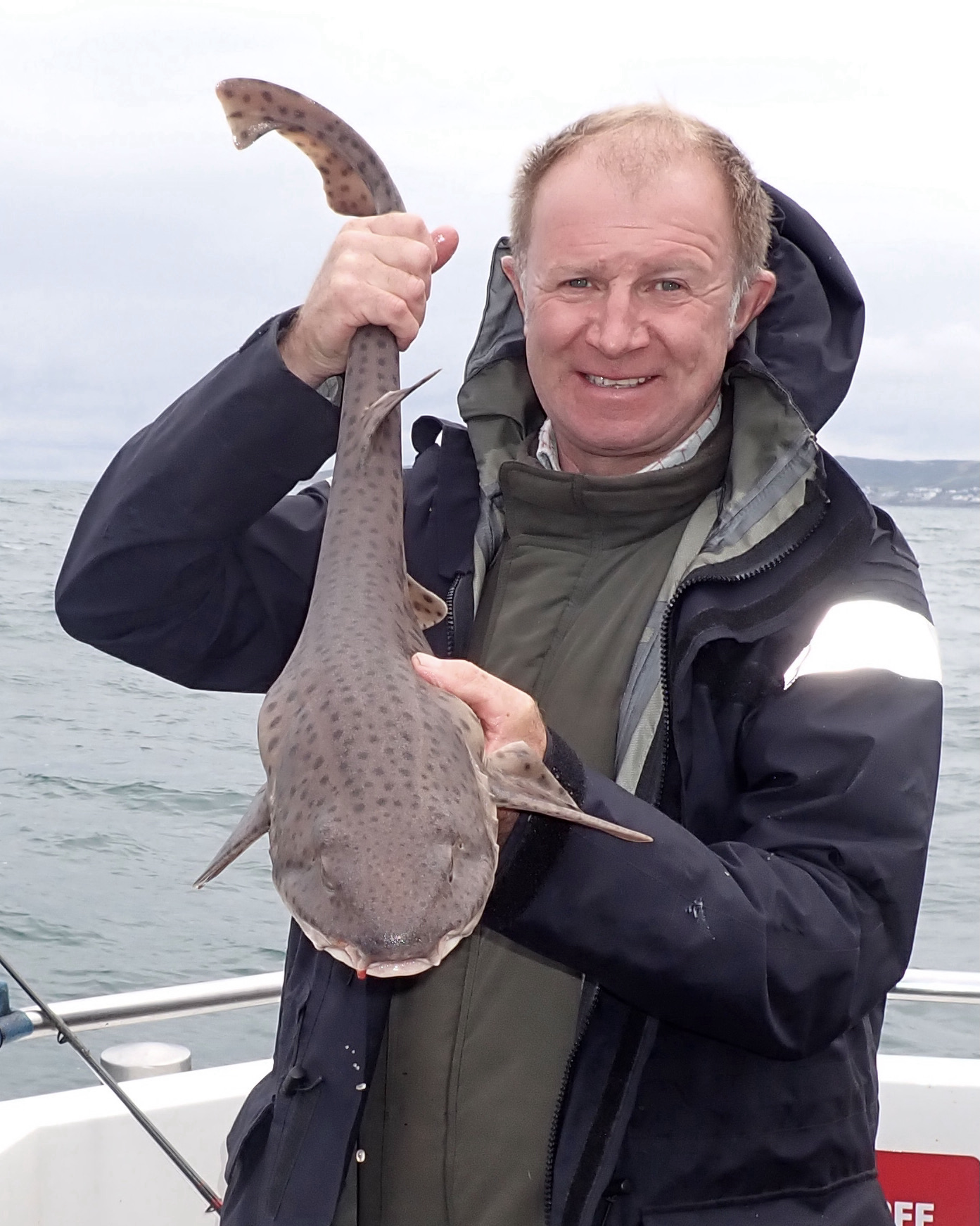
As the tide eased further towards high water John took us out to deep water , tope were our intended quarry. Once again we settled at a new mark located from Johns extensive log book of carefully jotted coordinates.
Steve Edmonds hooked what was undoubtedly a good tope that bit through his heavy mono hook link after a few minutes.
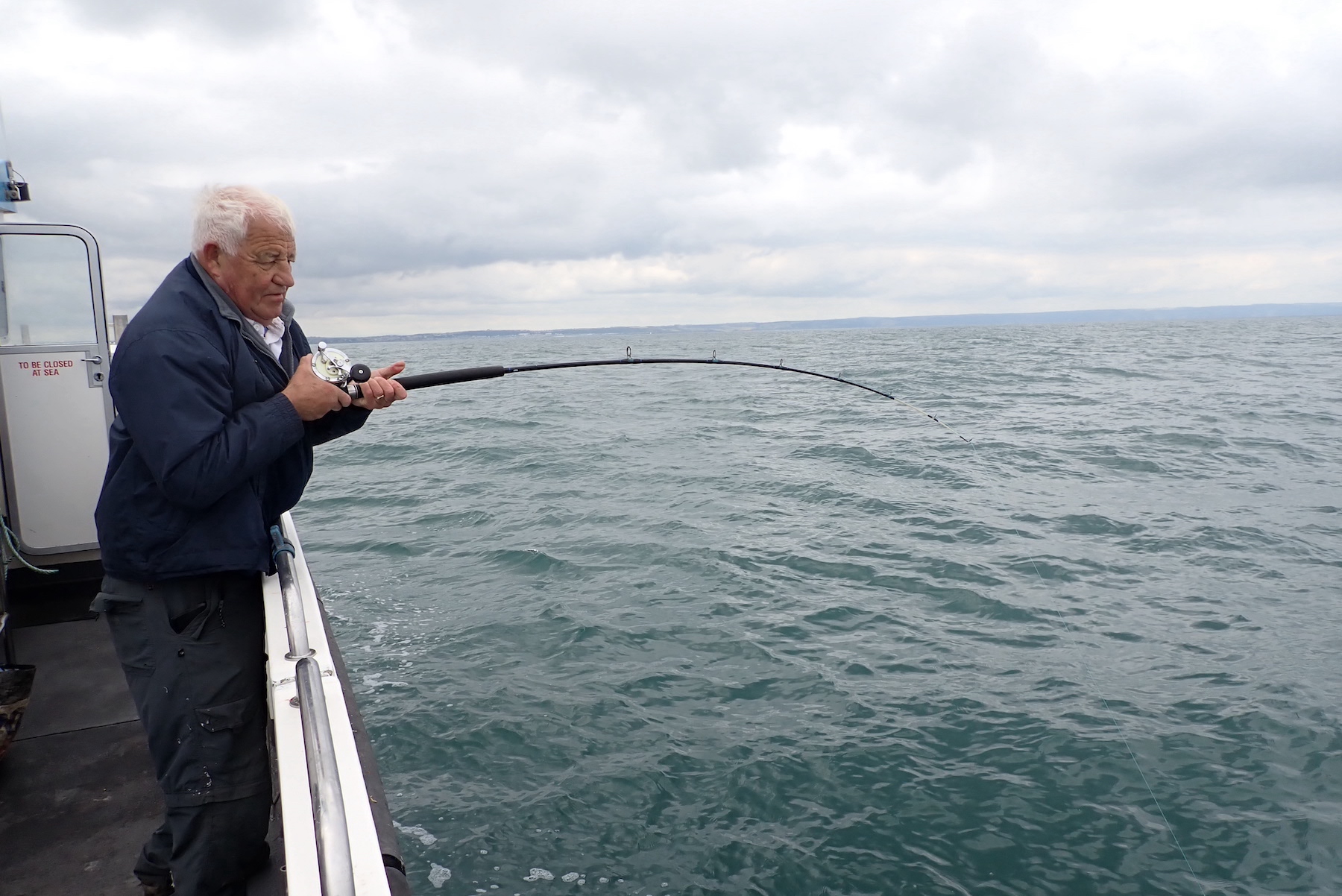
A few moments later it was my turn and a good fish took off taking line from the reel. The battle ebbed and flowed with the fish hanging deep beneath the boat after its initial powerful runs. I exerted pressure and brought the tope to the boat where it was skill-fully netted by John.
The fish was carefully weighed pulling the scales to a respectful 35lb. Five minutes or so later I hooked into another tope that was a few pounds lighter.
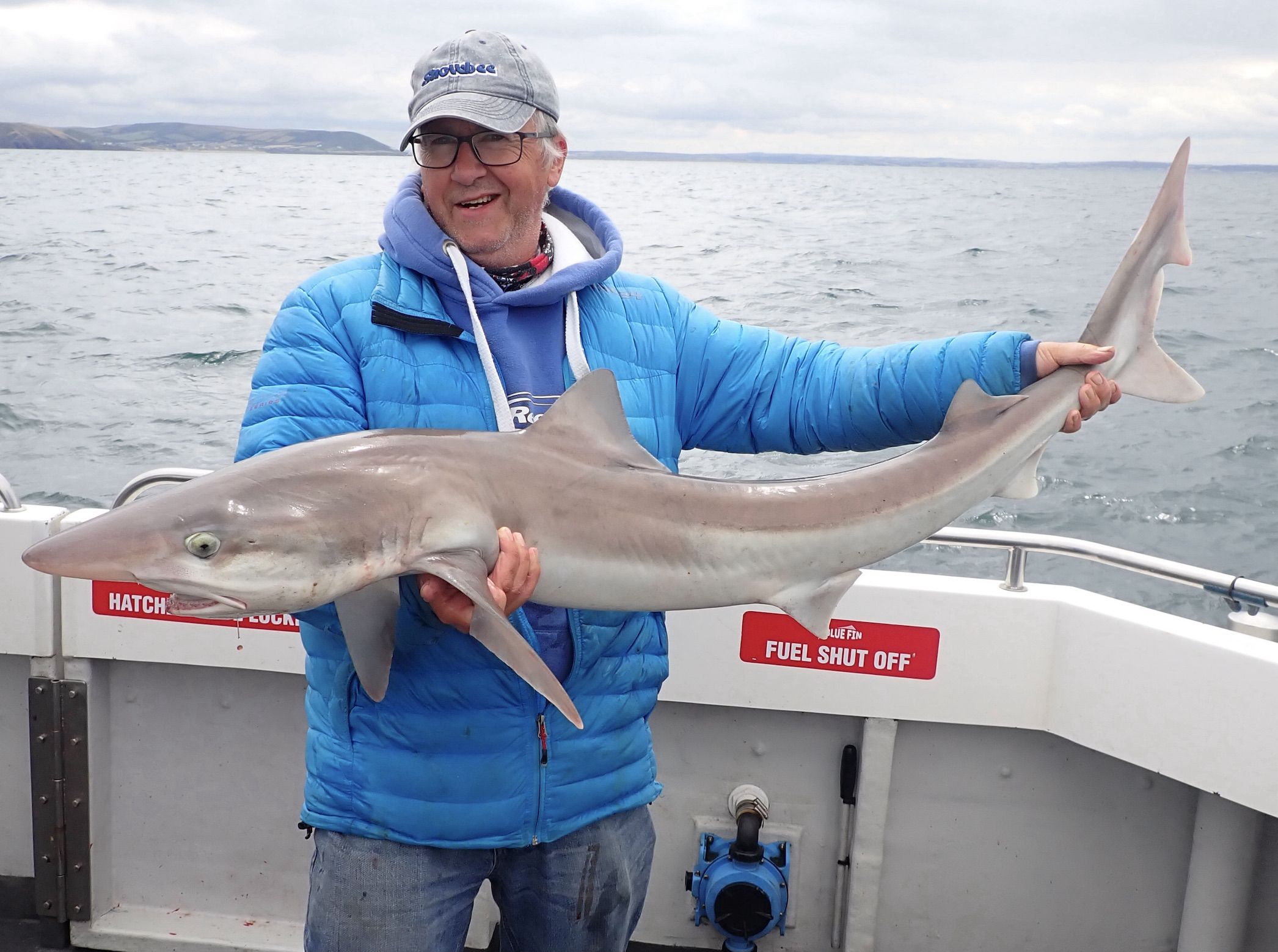
Throughout the time at this mark a steady stream of dogfish came to the boat along with a few small huss and strap conger.
As the tidal speed increased I hooked into another fish that powered away using the tide to its advantage. This was undoubtedly a good fish and started to move against the tide a sure indication that it was an above average specimen. Eventually pressure brought the fish within view a sleek tope that hung heavy in the tide causing several anxious moments as it rolled in the leader. Fortunately I had taken the precaution of using a heavy rubbing leader of 150lb b.s mono to protect the braid mainline.
Braid is beneficial in allowing the use of lighter leads and has no stretch ensuring excellent contact with the business end. It is also extremely strong in relation to its thin diameter. Its disadvantage is its poor abrasion resistance and fineness when sorting tangled lines.
The fish was eventually scooped into the net and brought on board where it thrashed wildly before being secured carefully to remove the hook. This fish proved to be the heaviest of the day scaling 41lb. The fish swam away strongly disappearing into the clear waters from whence it had come.
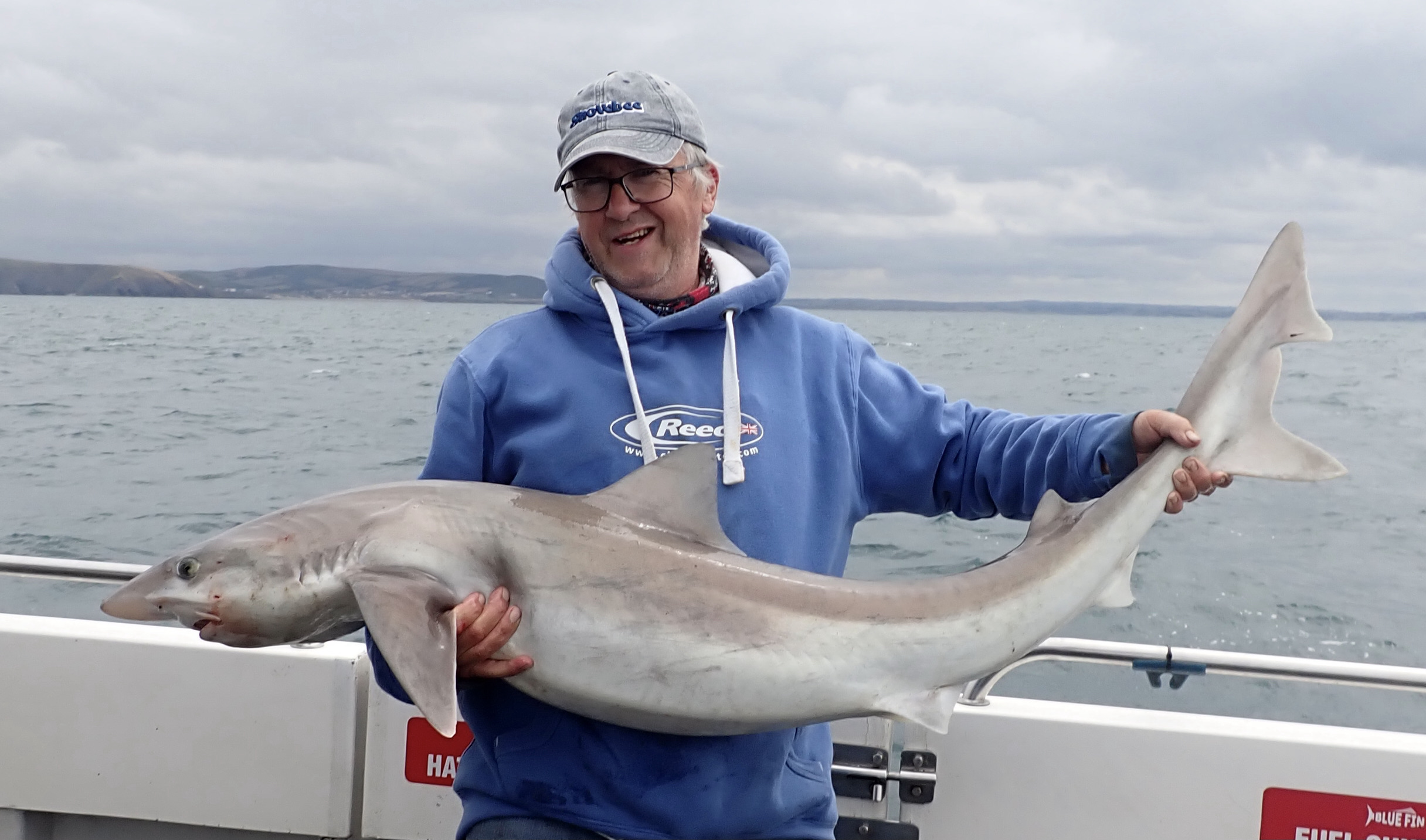
With the tide now at full strength mid tide we headed back inshore to drift a few more reefs. This proved unproductive and with the tide easing John headed back up channel and anchored at another deep water mark where tope were again the intended species. A couple of small conger, small huss and plenty of dogfish rattled the rod tips. Dave Hathaway hooked a very powerful fish that put a good bend in the rod ripping several yards of line from his reel. Sadly the fish bit through the heavy mono trace of 150lb b.s after a short battle leaving Dave to ponder on what could have been.
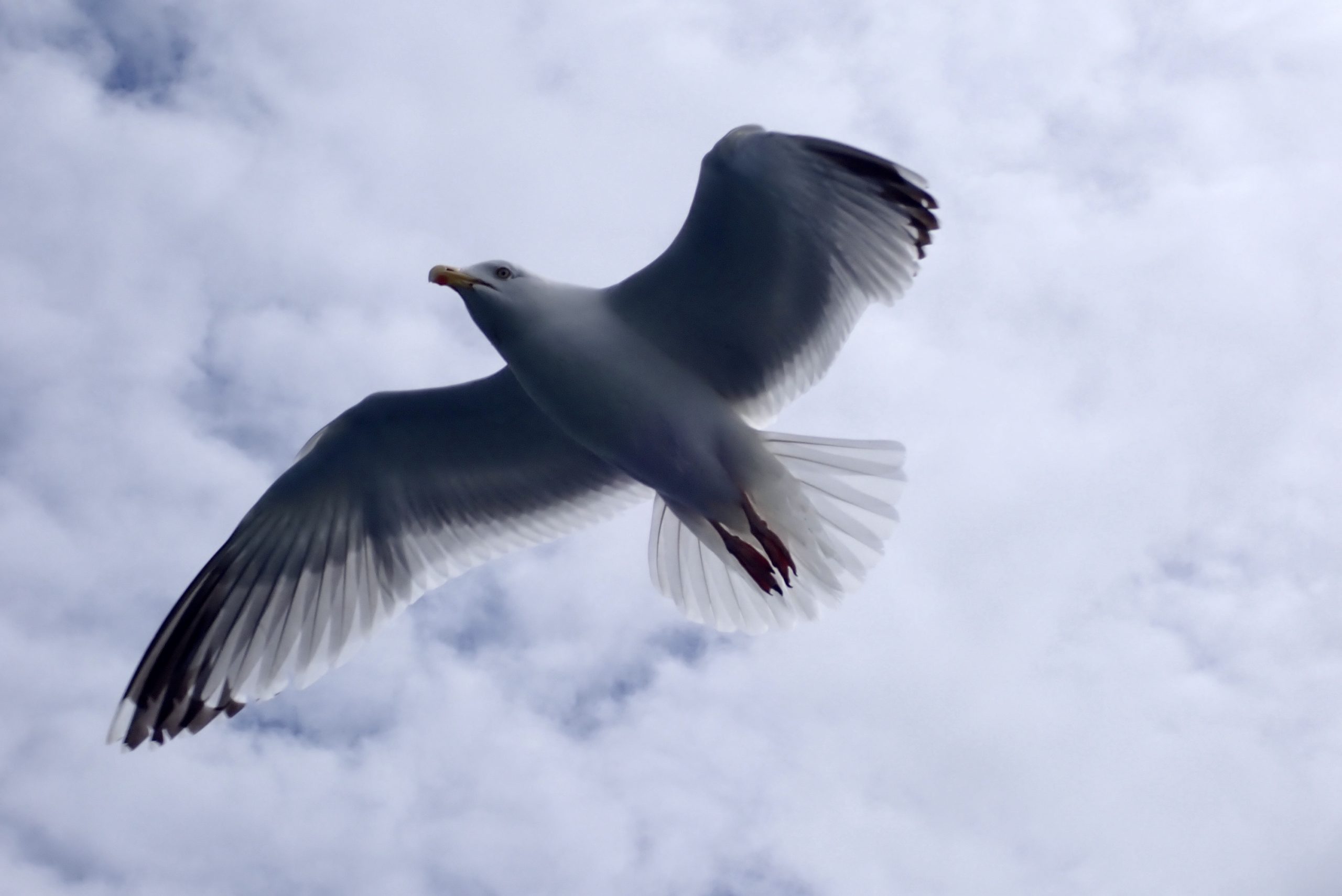
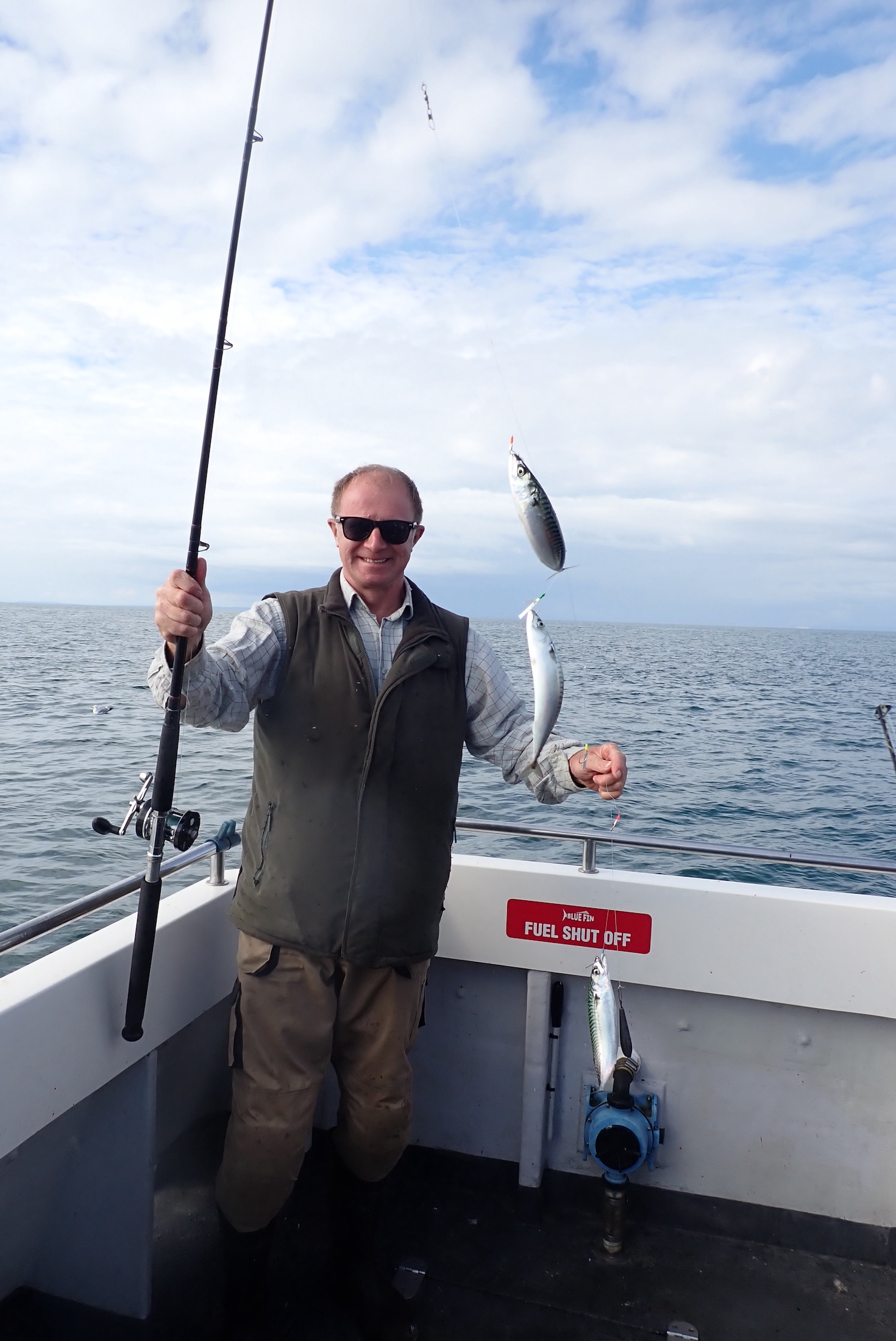
By now it was time to head back and John agreed to stop off for a few fresh mackerel close to Ilfracombe. Fortunately the mackerel were still there and we all caught enough for a delicious evening snack when we got home. Is there a better fish fresh from the sea?
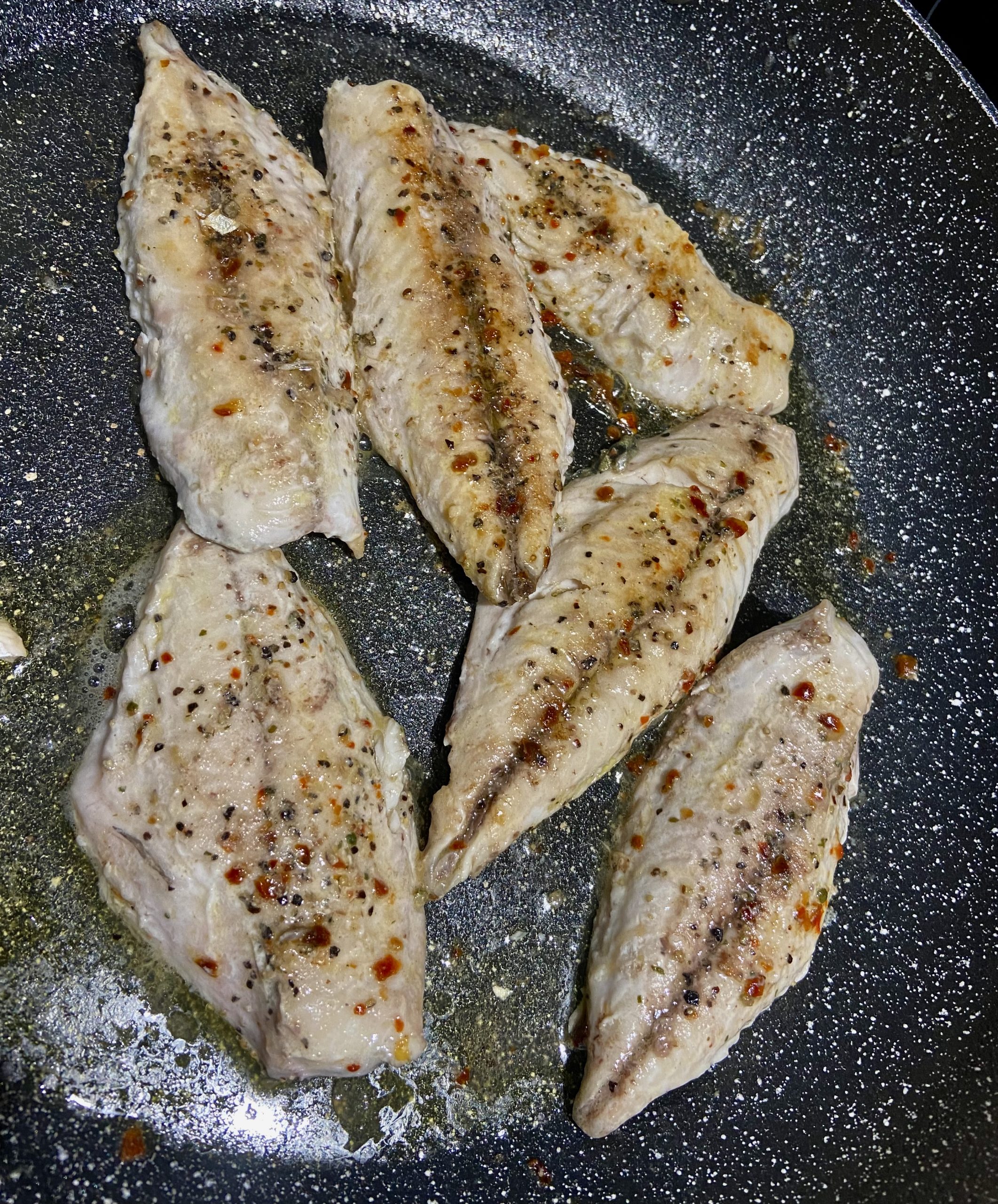
Reflecting upon the day I was obviously pleased to have boated three good tope and cannot help but ponder upon my luck. It is said that luck can be cultivated and there is some truth in this. I was fortunate to secure a prime position at the stern of the boat enabling a bit more freedom as to the weight selection. The anglers at the stern can use lighter weights and trot the bait out ensuring that the fish attracted by the baits scent intercept these baits first. I chose to use larger mackerel flappers that stopped the pesky dogfish devouring the bait before the tope found it. I also opted to use a heavy duty wire trace to ensure I did not get bitten off. There is some debate regarding the pro’s and cons of wire versus heavy mono. An option is perhaps to use circle hooks that tend to hook fish in the scissors of the jaw. Used in conjunction with heavy fluorocarbon they might be an option but for me its heavy duty wire until I am convinced otherwise.
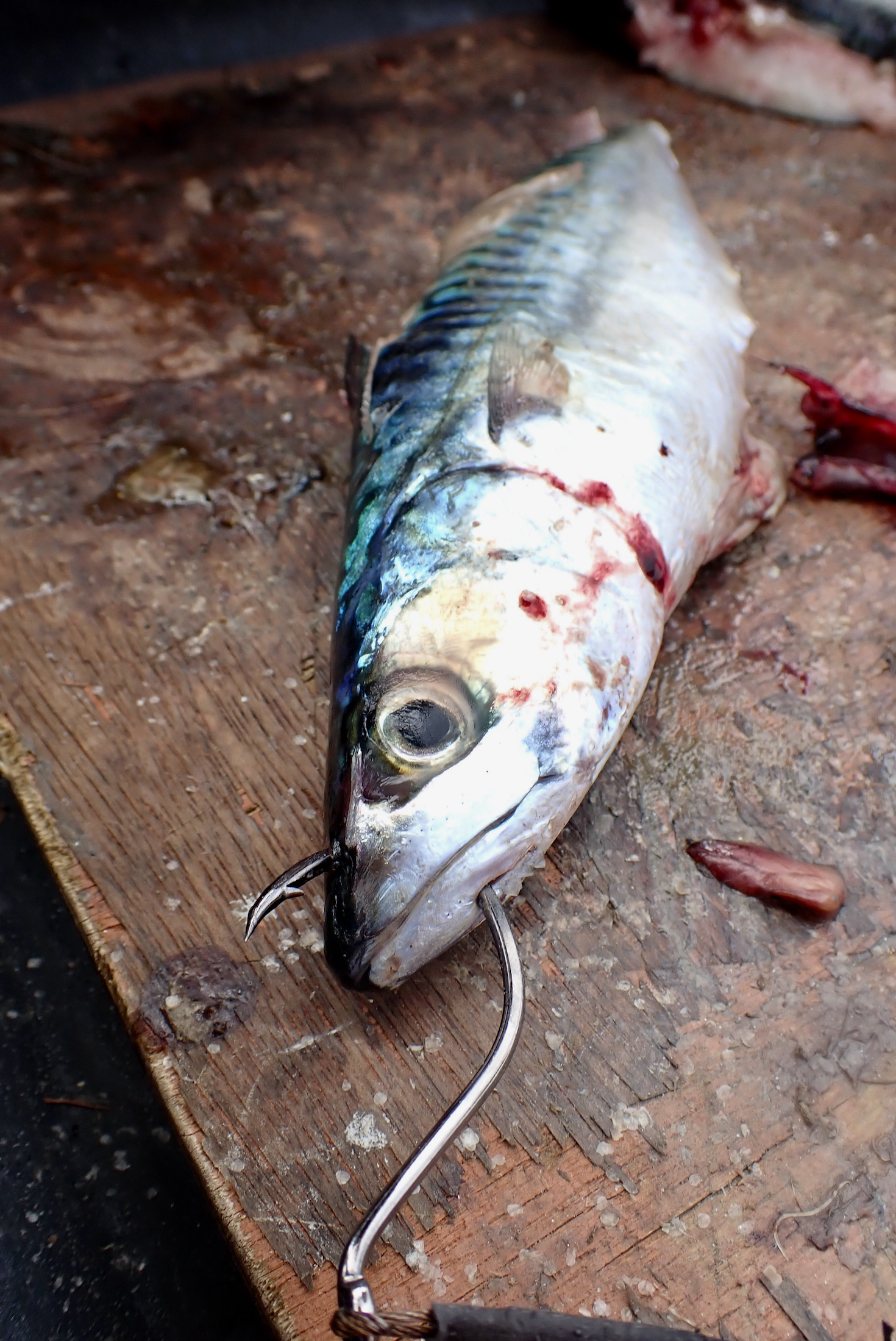
Choice of tackle when boat fishing is very much a matter of personal preference. There is balance to found between using tackle strong enough to subdue most fish hooked in a reasonable time without detracting from the joy of bringing the fish to the boat.
